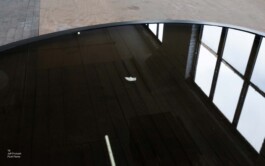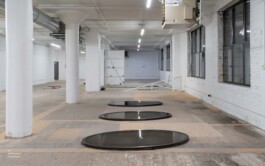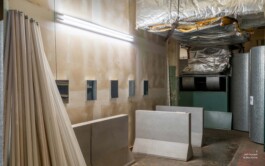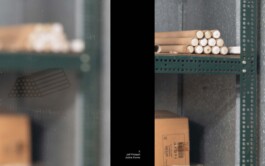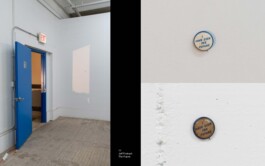Jeff Prokrash
Active Forms (2017)
5 Inkjet prints on Moab paper, aluminum frames, two-way mirrors
Pages 33, 62, 81, 88, 115 (Reflective reductions from the Active Foam Products Catalogue)
Jeff Prokrash
Fluid Panes (2025)
Tinted Glass, Aluminum, Silicone (Three Windows collected from the demolition site of Prentice Women's Hospital 1975-2014, Architect Bertrand Goldberg, Chicago, IL)
These oval windows were liberated during the contentious demolition of Bertrand Goldberg’s iconic Prentice Women's Hospital in Streeterville. Part of an architectural system of care that housed Northwestern Hospital’s maternity ward, the windows framed many infants’ first view of the outside world.
The demolition of the hospital marks a fraught moment in this city's architectural history. Goldberg’s innovative approach to building design that foregrounded patient access to caretakers was left behind as medical innovation and demands for scarce urban real estate advanced. After falling into disuse, a cultural campaign ensued with contributions from an ambitious alliance of preservationists, historians, architects, engineers, and activists with intentions to preserve or retrofit the structure to meet the needs of Northwestern's Hospital. After the failure to achieve landmark status, demolition commenced in 2013.
Jeff Prokrash
The Future (2025)
7 pinback buttons from General Motors' "Highways and Horizons" Pavilion at the 1939-1940 New York World's Fair
Seated in a motorized conveyor system, visitors to “Highways and Horizons” were ferried over a sprawling diorama simulating the first birds eye view of an American landscape with an interstate highway system. Projecting 30 years into the future, this ride aligned with the agenda of the New York World's Fair, "The World of Tomorrow," that proposed an innovative and commercially viable future. Each visitor to the pavilion was given a pin stating "I have seen the Future."
Today, 55 years beyond this proposed timeline, we are the recipients of that future. Stained, sun-faded, worn, each button is a retrospective indicator of the individual trajectories and lived inequities of those who experienced this speculative model.
